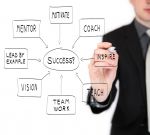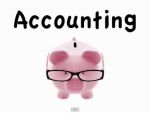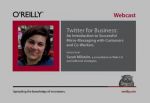
IT IS SIGNIFICANT, even vital, to gear your time for efficiency and effectiveness. As the world and its technologies begin to connect on more levels, it is imperative to, not only, boost your productivity, but also your effectiveness. Productivity is easy; just get things done, literally anything done, and stay busy. This has been the standard so far. However, the truth is that while this still matters, it’s not the key. Businesses of today are not handing out gold stars or bonuses to those individuals who have exhausted themselves by standing waist-deep in busy-work, or to those that rely on antiquated productivity tools and methods to accomplish their goals. It is crucial to step it up and streamline how you make it happen. Below are a few tips on how to be more efficient and effective in a professional setting.
Create daily task lists and check the list off as you go. It typically works better if you front-load your workday with all of the items that are the most time-sensitive and that are of actual significance. Don’t get caught in the loop of minutiae, day-in and day-out, avoiding the actual tasks that need to be done. Quit reloading the printer paper, checking emails, refilling a coffee cup, and most of all, avoid lengthy phone calls and conversations that include a lot of insignificant dialogue. For example, if you have a question, call the necessary individual and ask “the question;” from there, thank them and move on. People spend too many minutes every day (that soon become hours every week, days every month, and weeks every year) talking about the weather, kids, sports and everything else, that has little or no impact on the completion of work-related tasks. Why does the DMV take forever? Because it doesn’t matter how many people the employees assist, just the number of hours they sit there assisting. Why would they hustle? There’s no incentive.
Another basic addition beneficial to effective office environments is goal sheets. It’s a smart move to organize short-term and long-term goals. This way, you can work toward the completion of these tasks over the following weeks, months and years. This may seem unnecessary, but realistically think for a moment about how easy it is for items on a task list to be overlooked or pushed back beyond a reasonable deadline, thus subsequently slowing down the evolution of a project or an entire business. My solution to this is to have regular meetings where prospective targets are regularly addressed. Organize it anyway you wish; 1st quarter, 2nd quarter, 3rd quarter targets; January, February, March targets; even 24, 48, 72 hour targets. If you work from a virtual office and don’t get to see your employees or coworkers face-to-face on a regular basis, consider sending daily, weekly, or monthly email reminders. Don’t be a nagging boss or coworker; keep them friendly. The goal is to keep people on task, on the same page, and informed about progress and approaching deadlines.
Don’t be afraid to use a planner; it can be found on a computer, smart phone, tablet, or even a conventional spiral-bound notebook. They key to this working, however, is that you actually use the planner. So many people who engage in business everyday lack the insight and ability to utilize the technologies available, therefore placing limitations on their own abilities, productivity and efficiency. It’s genuinely sad to watch skillful, qualified and motivated individuals lose their grasp on the productivity tools of today. They soon find themselves less effective and less productive than their peers and subordinates.
Understand that in ever-growing 21st century business, there is no place for backward thinking and walks down memory lane. Everything is different, everything is dynamic, and we now have to compete in a global marketplace.
























